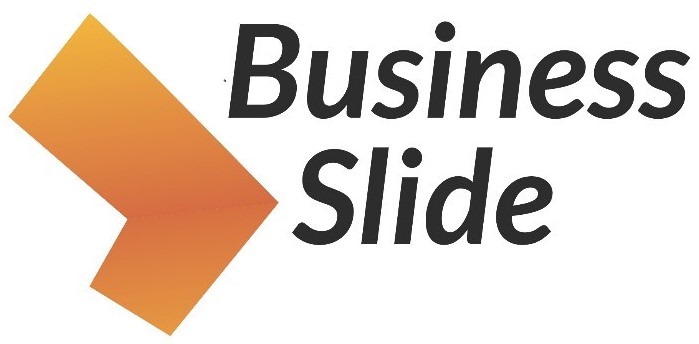The e-commerce industry, with its explosive growth in recent years, presents a promising and inspiring business venture for aspiring entrepreneurs.
The growth potential is immense, and if you wish to sell products or services, starting an e-commerce business allows you to work from anywhere and reach a global customer base.
However, getting started requires careful planning, execution, and ongoing optimization. This blog provides actionable steps to help you launch and grow your e-commerce business successfully.
What Is an E-commerce Business?
Before proceeding to the process, let’s first define an e-commerce business. An e-commerce business is buying and selling goods or services over the Internet.
e-commerce offers a wide range of niches, from clothes and electronics to digital courses and subscriptions.
Amazon, Shopify, and Woo Commerce make starting an e-commerce business easier and reach a global audience.
Why Start an E-commerce Business?
Starting an e-commerce business appeals to many because of its unparalleled flexibility. Unlike traditional retail, e-commerce eliminates needing a physical storefront, allowing you to work from anywhere.
Moreover, an online store is open 24/7, allowing you to generate revenue even while you sleep, giving you full control over your work-life balance.
The opportunities are endless if you’re exploring e-commerce business ideas or considering an AI e-commerce business. From drop shipping to handmade crafts, there’s a niche for everyone.

Step 1: Research Your Market and Niche
The first step in how to start an e-commerce business is thorough research. Identify a profitable niche and target audience. Consider these factors:
- Demand: Look for products or services with high demand and low competition.
- Trends: Use tools like Google Trends to identify emerging trends in your chosen niche.
- Competition: Analyze competitors’ pricing, marketing strategies, and customer reviews.
For example, if you’re considering starting an Amazon e-commerce business, study the best-selling categories on Amazon to pinpoint potential opportunities.
Step 2: Create a Business Plan
A solid e-commerce business plan is essential for success. Your plan should outline:
- Business model: Will you sell physical products, digital products, or services?
- Revenue streams: Consider dropshipping, wholesale, or subscription-based models.
- Marketing strategy: Define how you’ll attract and retain customers.
- Financial projections: Estimate startup costs, revenue, and profit margins.
Whether starting an e-commerce business from scratch or looking to buy an e-commerce business opportunity, a clear plan will keep you on track.
Step 3: Choose the Right Platform
Selecting the right platform is crucial when starting an e-commerce business. Popular options include:
- Shopify: Ideal for beginners with its user-friendly interface and customizable templates.
- Woo Commerce: A WordPress plugin perfect for those familiar with website development.
- Amazon: Great for leveraging an existing marketplace with a massive customer base.
Each platform has pros and cons, so choose one that aligns with your e-commerce business plan and goals.
Step 4: Secure Funding
One common concern is how to start an e-commerce business without money. While some methods, such as print-on-demand or affiliate marketing, require little to no upfront investment, most ventures need some capital.
Consider these funding options:
- Personal savings
- Small business loans
- Crowdfunding platforms like Kickstarter
- Investors interested in e-commerce
Step 5: Develop a Strong Brand

Building a memorable brand is key to standing out in a competitive market. Focus on:
- Logo design: Create a professional logo that reflects your brand identity.
- Brand voice: Maintain a consistent tone in your marketing and customer interactions.
- Packaging: Unique and eco-friendly packaging can enhance the customer experience.
If you’re targeting a specific niche, like an AI e-commerce business, emphasize your expertise and innovation in your branding.
Step 6: Source Quality Products
The quality of your products can make or break your e-commerce business. Depending on your business model, you can:
- Manufacture your products
- Partner with suppliers
- Use drop shipping services
Test products and verify their quality before listing them for sale.
Step 7: Set Up Your Online Store
Your online store is the backbone of your e-commerce business. Key elements to include:
- User-friendly navigation: Make it easy for customers to find what they want.
- High-quality images and descriptions: Showcase your products with detailed photos and compelling descriptions.
- Secure checkout process: Use trusted payment gateways like PayPal or Stripe.
If you’re considering an Amazon e-commerce business, ensure your product listings are optimized for Amazon’s algorithm.
Step 8: Implement Marketing Strategies
Effective marketing is essential for attracting customers to your store. Here are some strategies to consider:
- Search Engine Optimization (SEO): Optimize your website for keywords like “how to start an e-commerce business” and “e-commerce business ideas.”
- Social media marketing: Use platforms like Instagram and Facebook to promote your products.
- Email marketing: Build an email list and send personalized offers to your subscribers.
- Paid ads: Invest in Google Ads or Facebook Ads to drive traffic to your store.
Step 9: Manage Operations Efficiently
Running an e-commerce business involves managing inventory, processing orders, and handling customer inquiries. Consider using tools like:
- Inventory management software
- Order tracking systems
- Customer relationship management (CRM) tools
Step 10: Protect Your Business with Insurance
If you’re starting a new store or looking at an e-commerce business for sale, investing in e-commerce business insurance is a wise decision. Securing the best e-commerce business insurance is crucial to safeguard your venture. Common types include:
- General liability insurance: Covers accidents and injuries.
- Product liability insurance: Protects against claims related to defective products.
- Cyber liability insurance: Safeguards your business against data breaches.
Challenges of Starting an E-commerce Business

Like any business, e-commerce comes with its challenges, including:
- Competition: Standing out in a saturated market.
- Shipping issues: Managing logistics and delivery delays.
- Customer retention: Building loyalty in a competitive landscape.
How to Start an E-commerce Business Without Money
If you’re wondering how to start an e-commerce business without money, consider these low-cost strategies:
- Drop shipping: Sell products without holding inventory.
- Print-on-demand: Create custom designs for t-shirts, mugs, and more.
- Affiliate marketing: Earn commissions by promoting other brands.
Future Trends in E-commerce

An AI e-commerce business could position you at the forefront of innovation in the industry. The future of e-commerce is evolving rapidly, with trends like:
- AI-driven personalization: Enhance customer experiences with AI tools.
- Sustainability: Focus on eco-friendly products and practices.
- Voice search optimization: Cater to users who are searching via smart speakers.
Read More: How to Start a Profitable Box Truck Business in 6 Easy Steps
Faqs About E-commerce Business
How do I start an e-commerce business on Amazon?
To begin an Amazon e-commerce business, create a seller account, choose your fulfillment method, list your products, and use Amazon’s advertising tools to reach customers.
How much does it cost to start an e-commerce business?
The startup costs vary depending on the niche, platform, and marketing strategies. Some models, such as drop shipping, require minimal investment.
Do I need a business license for an e-commerce business?
Most jurisdictions require a business license. Check local regulations to comply.
What’s the best platform to start an e-commerce business?
Some of the popular ones are Shopify, Woo Commerce, and Amazon. Select one that is appropriate for your goal and technical skill level.
What type of insurance do I need for an e-commerce business?
General liability, product liability, and cyber liability insurance are common types of insurance. These protect your business from potential risks and legal issues.
Final Words
Starting an e-commerce business opens up possibilities for entrepreneurs willing to put in the effort. With the steps above, you can create a successful online store that caters to your customers’ needs and fulfills your financial objectives.
Protect your investment with e-commerce business insurance, and keep up with market trends to stay ahead of the competition. Start your journey today and unlock the limitless potential of online commerce!


